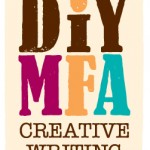26 Jan
Every Book Can Get Better: Getting to Know Your Protagonist
Posted in Conferences, Craft, Process, Writing
1) Everyman: Instead of focusing on how “normal” or ordinary this character is, try to figure out what makes this character inspiring.
2) Hero/Heroine: Sure, this character is extraordinary… maybe even superhuman, but what makes him or her human?
3) Dark Protagonist: This character is wounded/lost/condemned to suffer but how can he or she find hope?
We’ve all heard writing teachers tell us that our protagonist needs to change, but rarely do they ever tell us how. Maass’ lecture taught me that character development comes down to one simple principle: whatever category your protagonist falls into, the challenge is to make the reader realize that the character could be something that’s the flip-side of who the character actually is. In other words, the ordinary character needs to have the potential to do something extraordinary, the superhuman character must become at least a little bit human and the condemned character must discover a glimmer of hope.
But wait, it gets better. Instead of making us think only about our characters, Maass showed us how to get to know our characters by drawing from our own experiences. He had a whole series of questions he asked us to answer about ourselves and our experiences depending on what category our protagonist fell into. Essentially, the question lists came down to this:
- For the Everyman think of someone who inspires you. Try to tease apart what it is that makes that person inspiring and they give that trait to your protagonist (even if it’s just a small slice of that trait).
- For the Hero/Heroine make note of ways in which you are fallible and human. Try to give some of that to your protagonist.
- For the Dark Protagonist consider ways you can feel compassion for that character. How can he or she find redemption?
Sometimes it’s scary when our characters turn around and do the opposite of what we want them to do. I know when that happens to me, it seriously makes me question my sanity. But the truth is, when our characters misbehave or surprise us, that’s when we know that they’re becoming real.
Update: for more on Donald Maass’ session Putting Fire in Your Fiction, check out this post at All About Them Words. In her post, Ghenet shares some tips from Maass on how you can draw on your experiences to make flat scenes come to life.










 Call me Gabi (pronounced gah-BEE). I'm a writer, freelance teacher, and a lover of books and words. I'm also the instigator of DIY MFA. iggi's my sidekick, but he thinks he's the brains behind this operation.
Call me Gabi (pronounced gah-BEE). I'm a writer, freelance teacher, and a lover of books and words. I'm also the instigator of DIY MFA. iggi's my sidekick, but he thinks he's the brains behind this operation.
 ROW80 Check-In (2)
ROW80 Check-In (2) YA Cafe: Villains and Antagonists
YA Cafe: Villains and Antagonists Introducing Writer Fuel
Introducing Writer Fuel ROW80 Check-In (1)
ROW80 Check-In (1)